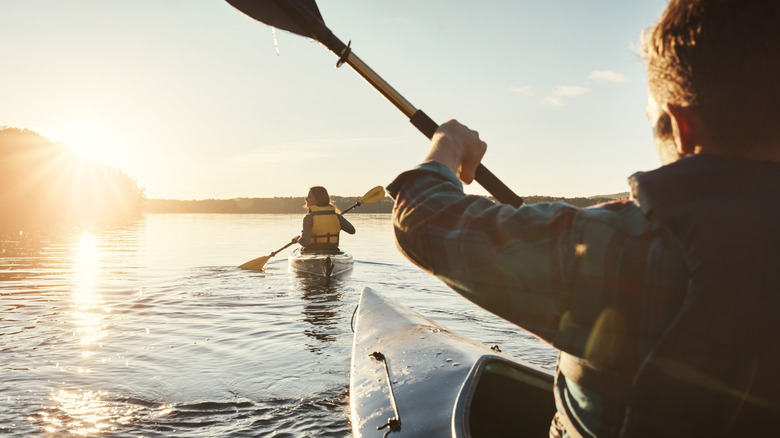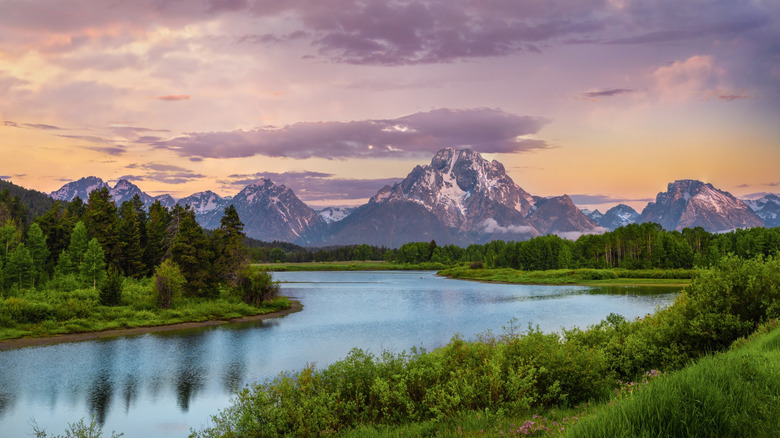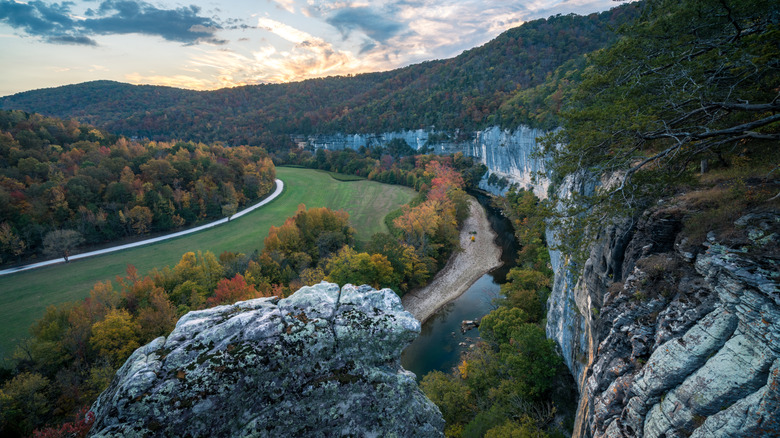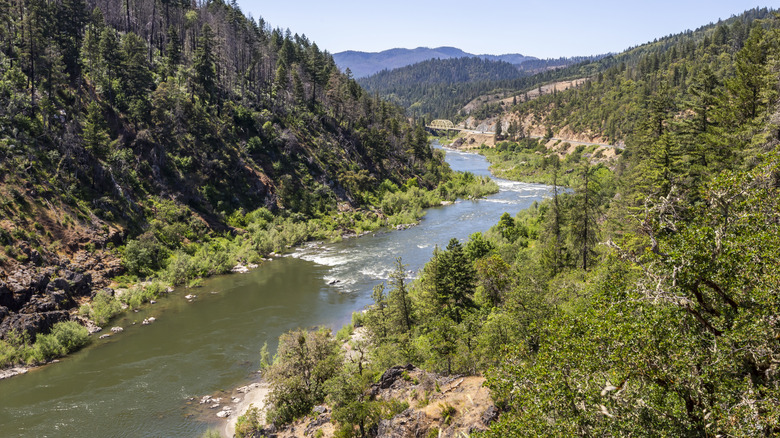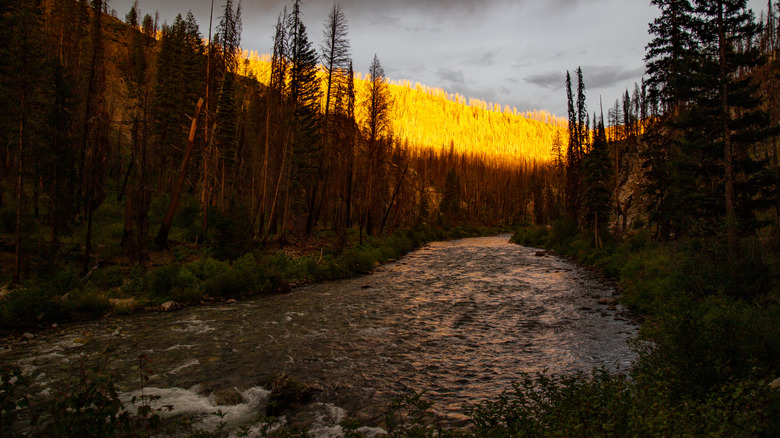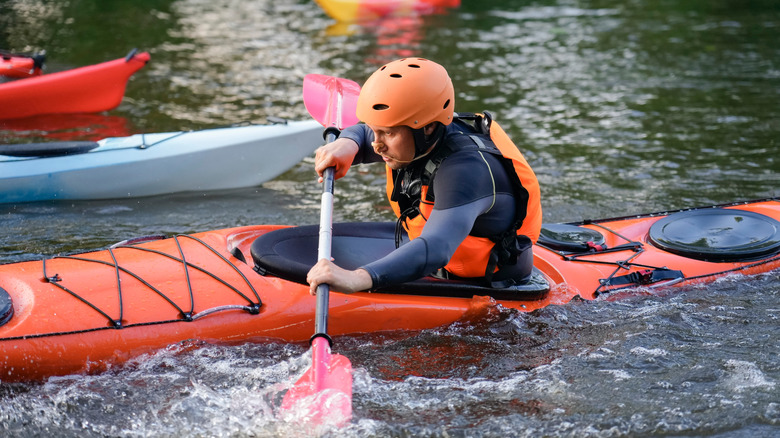The Best Rivers To Go Kayaking (Other Than Colorado), According To User Reviews
Colorado is an adventure-lover's hub, known for incredible hiking in the Rockies and some of the best skiing in the U.S. It is also the starting point of the famous Colorado River, one of the world's premier kayaking destinations. It has rightfully earned this accolade with its breathtaking, long, variable sections. Still, America's river network is absolutely loaded with jaw-dropping paddling spots that don't get nearly as much attention. From Idaho's deepest-in-the-nation canyon to Arkansas' crystal-clear Ozark gem, these waterways blend heart-pounding whitewater and peaceful wildlife floats that'll make you forget the Colorado River even exists.
For this article, we dug through reviews on Tripadvisor, Yelp, and Google; scoured threads on paddling forums; and cross-referenced recommendations from outdoor publications like Paddling Magazine and Mountain House to find rivers that consistently earn rave reviews from both first-time kayakers and seasoned paddlers. The result? Four outstanding rivers that prove the best kayaking in America doesn't start and end with the Centennial State.
The Snake River cuts through North America's deepest gorge
Idaho's Hells Canyon on the Snake River is deeper than the Grand Canyon — yes, you read that right. In fact, it's the deepest canyon in the country. The Snake River is nearly 8,000 feet deep, and it stretches over 1,000 miles as it slithers from Wyoming down through Idaho, then along the Oregon border, and eventually into Washington. What makes the Snake particularly appealing is how it accommodates different skill levels. With it being so long, there are sections that are calm and beginner friendly, as well as tough, technical sections for those who want more of a challenge. One kayaker on AllTrails described their trip on the South Fork as "one of the most scenic routes I've ever done," noting that "once you pass under the Fall Creek Falls bridge and enter the canyon, that's when the real beauty kicks in. Towering cliffs, dramatic rock faces, and panoramic views make every bend in the river a photo-worthy moment."
Birders especially love the Snake. Paddlers report seeing pelican colonies, ducks, hawks, and bald eagles along calmer sections like the Hagerman. Pull over in Massacre Rocks State Park, Idaho's state park known for its dramatic geology and historic charm, for easy access to the water. The Snake River is certainly gaining in popularity. An outfitter in Twin Falls told Nevada Sports Net that kayaking on the Snake has exploded in popularity over the past four to five years, with hundreds of weekend rentals now commonplace.
The Buffalo River flows wild through the Arkansas Ozarks
Want to paddle a river that's never been dammed? Head to Arkansas. The Buffalo holds the distinction of being "America's first National River," and it remains one of the few major rivers that flows exactly as nature intended, winding freely through the Ozark Highlands. This protected status means no reservoirs interrupting the current and no controlled flows — just a wild river carving through limestone bluffs that soar above the water.
Paddling.com describes the scenery as reminiscent of the film "Deliverance," with picturesque views, clear waters, and opportunities for rustic fishing and camping. The best part? No portages are required on the entire route. The sections near Ponca and Rush Landing showcase some of the most dramatic landscapes, with towering sedimentary walls like Big Bluff and Ludlow Bluff creating an almost theatrical backdrop for your paddle.
Families especially love this river for its gentle introduction to kayaking. One parent on Tripadvisor described taking everyone from toddlers to teens on the Pruitt to Hasty stretch, which took about four hours and featured small rapids that added excitement without scaring the younger paddlers (though they did encounter a log that posed as a hurdle). Local outfitters consistently call the upper Buffalo the finest paddling experience in the state, and after reading through dozens of glowing reviews, it's impossible to disagree.
The Rogue River mixes wilderness with whitewater in Oregon
Back in 1968, Congress designated the Rogue as one of the original eight Wild and Scenic Rivers in America, protecting its free-flowing waters through the rugged Siskiyou Mountains of southern Oregon. The area is accessed mainly by boat and foot, which makes it extremely pristine and wild.
Paddlers pass through narrow canyons of polished rock, grottos draped in ferns, heavily forested hillsides, cascading waterfalls, and swimming holes so nice you will want to jump overboard. The rapids vary enough to keep things interesting for different skill levels. Most sections run Class II and III, though there's also Blossom Bar, a Class IV rapid that even experienced kayakers should survey carefully before running. The variety means families can enjoy mellow stretches while advanced paddlers get their adrenaline fix on the same trip. Reviews are overwhelmingly enthusiastic. One first-timer on Tripadvisor called their four-day Rogue River journey "epic," noting that there were opportunities to challenge themselves as well as stretches of water ideal for relaxing.
Salmon River promises backcountry adventure in Idaho wilderness
Nicknamed "The River of No Return," Idaho's Salmon has earned legendary status among American paddlers. Congress protected this waterway under the Scenic Rivers Act of 1968, preserving more than 100 miles of wild river flowing through some of the most remote wilderness in the Lower 48. It's known for being stocked with salmon, trout, whitefish, and bass — perfect for anyone who wants to combine kayaking with angling.
For serious kayakers, the Middle Fork offers an epic challenge through the Frank Church-River of No Return Wilderness. While in the area, visit Salmon, Idaho, a little-known city for endless outdoor thrills and the gateway into the wilderness area. The Middle Fork section delivers nearly 100 miles bearing intimidating names like Velvet Falls and Pistol Creek Rapid, but you don't need to be an expert to enjoy the Salmon. The Main and Lower sections stay much tamer, with no rapids exceeding Class III, making them accessible to intermediate paddlers. Expect stretches that wind through deep canyons and forests, with numerous sandy beaches perfect for pulling over to swim, tan, or just relax.
Our methodology for finding the best kayaking rivers
Selecting these four rivers involved cross-referencing multiple information sources to ensure accuracy and reliability. We began by reading through user reviews on Tripadvisor, blogs, and Google, paying particular attention to rivers that received consistent praise from paddlers of all experience levels. Rivers mentioned repeatedly across different review platforms typically made better candidates than one-off recommendations.
Next, we consulted expert sources, including Paddling Magazine and Whitewater Guidebook. These publications provided technical information about rapid difficulty ratings, seasonal water level patterns, river history, and which sections work best for different paddler abilities. We also reviewed conversations on forums like CanoeTripping.net and Paddling.com, where regular river-goers discuss current conditions, share camping spot recommendations, and offer practical advice.
Our final selections had to meet several standards: variety in difficulty levels so both beginners and experts would find something appropriate, geographic spread across different U.S. regions, exceptional natural beauty, and positive track records. We prioritized rivers with recent feedback (from 2023 through 2025) to ensure conditions haven't changed dramatically.
